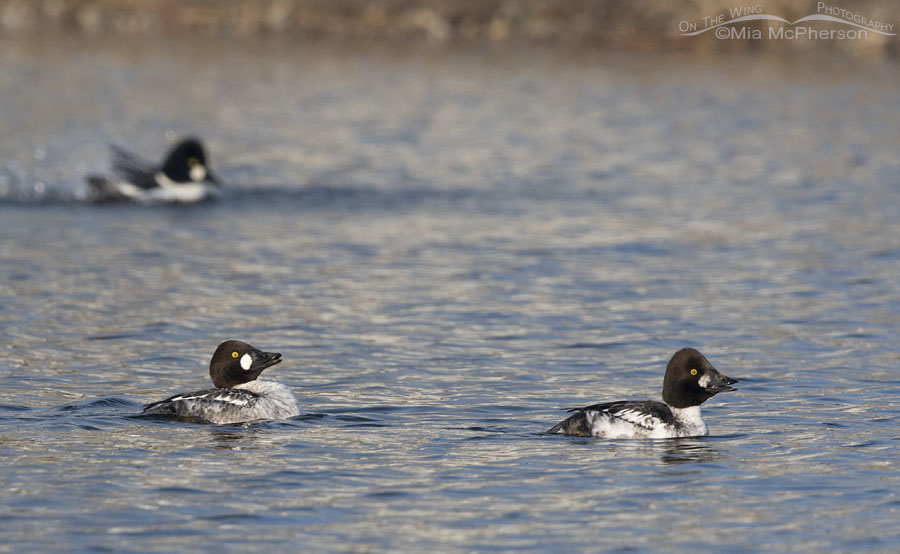 First winter male Common Goldeneyes displaying – Nikon D500, f7.1, 1/1250, ISO 500, Nikkor 500mm VR with 1.4x TC, natural light
First winter male Common Goldeneyes displaying – Nikon D500, f7.1, 1/1250, ISO 500, Nikkor 500mm VR with 1.4x TC, natural light
The number of birds in a specific location can increase and decrease substantially from one day to the next and that happened with Common Goldeneyes at my local pond in northern Utah when their numbers increased considerably. Two days ago I counted three Common Goldeneyes at the pond and yesterday there were more than twenty of these striking ducks there. Most of them were on the other side of the pond which were too far away to get high quality images of but some of them ventured much closer than that.
I did take some long distance images though when I saw some first winter Common Goldeneye drakes displaying. I don’t know how early this behavior occurs with first winter goldeneyes but I thought it was interesting to see since these were not adult males.
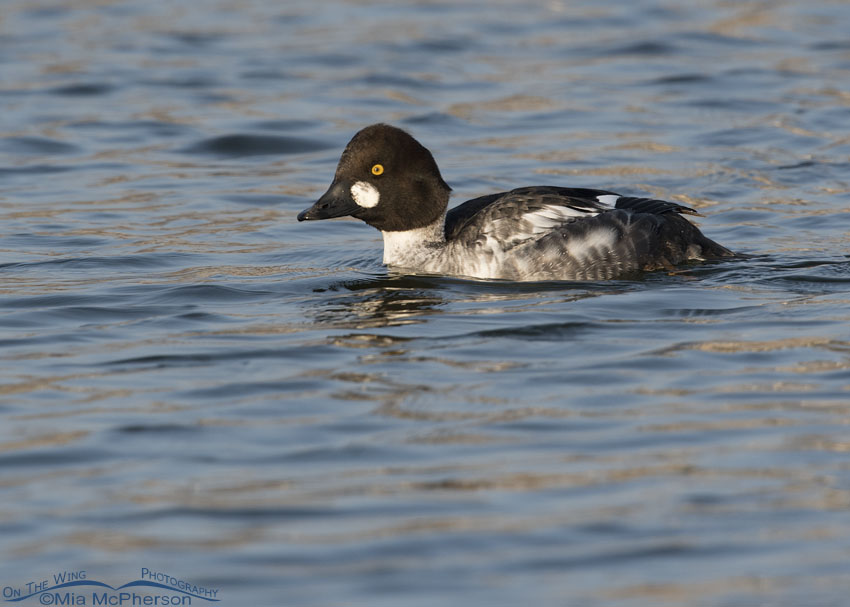 1st winter male Common Goldeneye in Salt Lake County – Nikon D500, f7.1, 1/800, ISO 500, Nikkor 500mm VR with 1.4x TC, natural light
1st winter male Common Goldeneye in Salt Lake County – Nikon D500, f7.1, 1/800, ISO 500, Nikkor 500mm VR with 1.4x TC, natural light
As I hoped a few of the first winter males moved closer to the shoreline which gave me closer views of their bright golden eyes and the oval patches behind their bills which are not always completely white at this age and can still have brown feathers mixed in with the white.
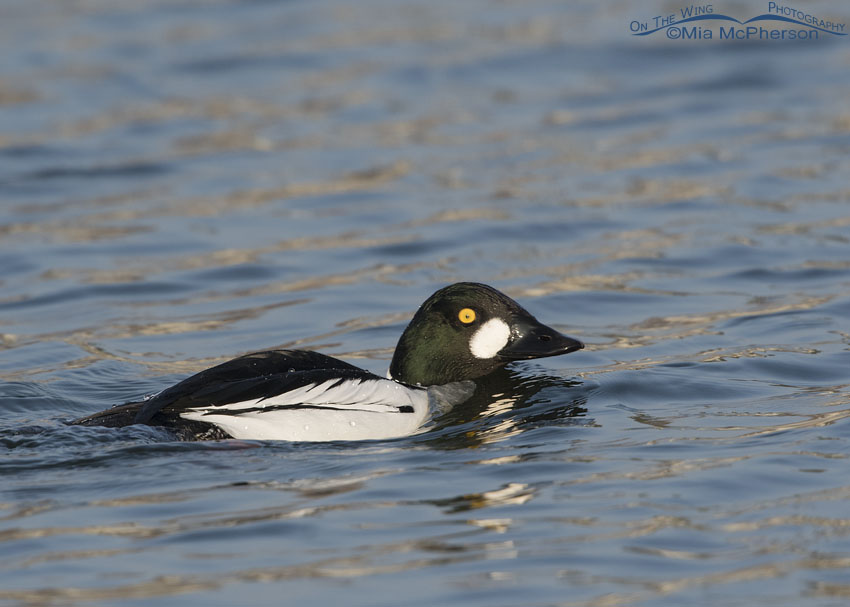 Winter Common Goldeneye drake – Nikon D500, f7.1, 1/1000, ISO 500, Nikkor 500mm VR with 1.4x TC, natural light
Winter Common Goldeneye drake – Nikon D500, f7.1, 1/1000, ISO 500, Nikkor 500mm VR with 1.4x TC, natural light
An adult male popped up in the group of three first winter drakes which scattered the young birds briefly, I don’t know if the adult was asserting dominance or if the younger males just got in his way while he was searching for food.
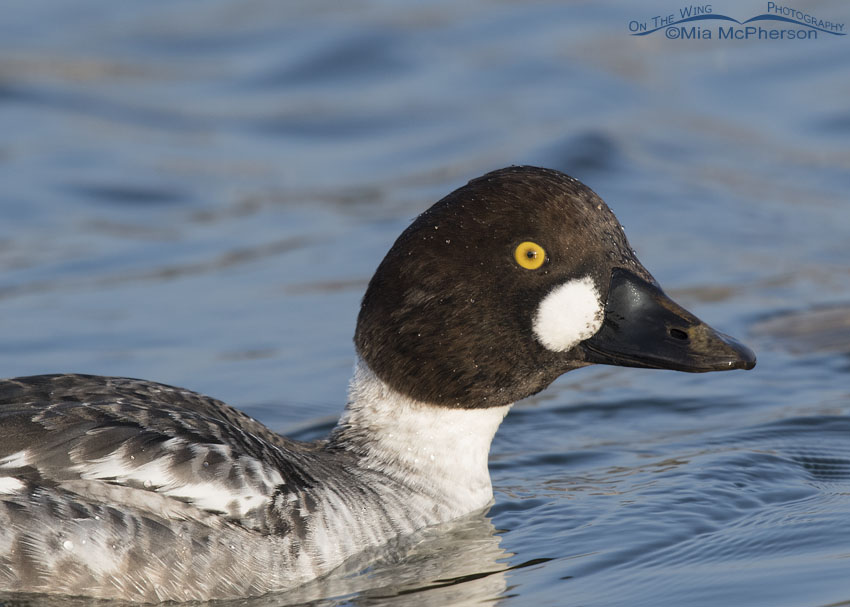 Close up of a first winter Common Goldeneye drake – Nikon D500, f7.1, 1/800, ISO 500, Nikkor 500mm VR with 1.4x TC, natural light
Close up of a first winter Common Goldeneye drake – Nikon D500, f7.1, 1/800, ISO 500, Nikkor 500mm VR with 1.4x TC, natural light
But instead of the adult male chasing away the young drakes they moved closer to where I sat inside a mobile blind near the edge of the pond which gave me the opportunity to take closer images of this duck species than I have ever taken before. I enjoyed every minute of taking these close up images and savored seeing all the fine details in their plumage, eyes and even the water droplets that were on their feathers.
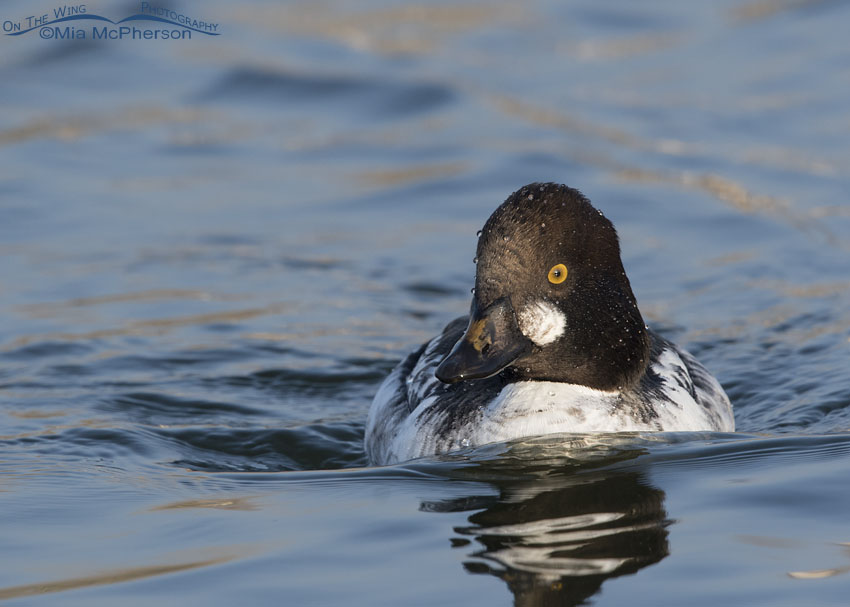 1st winter Common Goldeneye swimming towards me – Nikon D500, f7.1, 1/640, ISO 500, Nikkor 500mm VR with 1.4x TC, natural light
1st winter Common Goldeneye swimming towards me – Nikon D500, f7.1, 1/640, ISO 500, Nikkor 500mm VR with 1.4x TC, natural light
The first winter males were actively foraging for food and when they popped up onto the surface after a dive I was ready to photograph them. This immature male showed more brown in his white cheek patches than the other young males but his flanks and scapulars were much whiter in comparison. He can also be seen in the first image of this post on the right hand side.
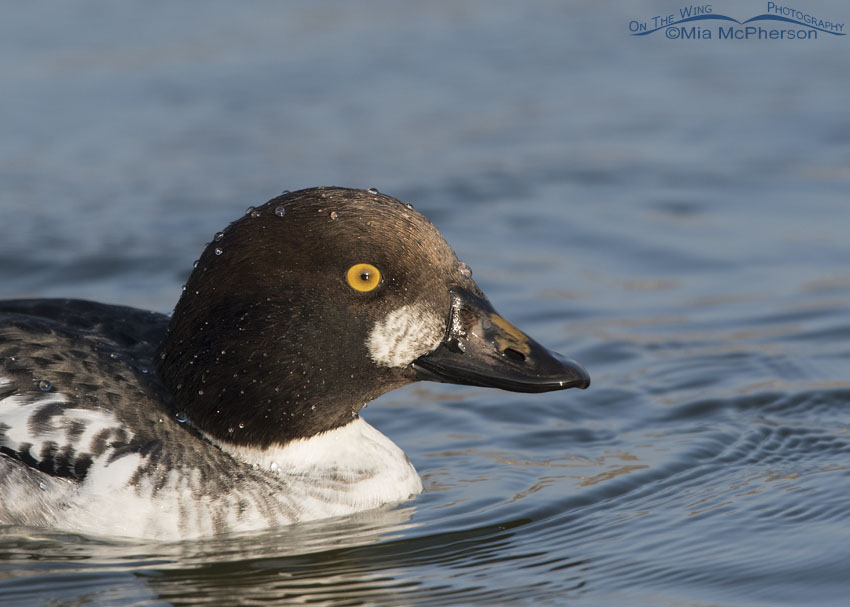 First winter Common Goldeneyes male portrait – Nikon D500, f7.1, 1/640, ISO 500, Nikkor 500mm VR with 1.4x TC, natural light
First winter Common Goldeneyes male portrait – Nikon D500, f7.1, 1/640, ISO 500, Nikkor 500mm VR with 1.4x TC, natural light
All of the first winter Common Goldeneye males that I saw yesterday showed some brown on their bills unlike the adult males which have shiny, pure black bills which remind of the patent leather shoes I was forced to wear sometimes as a young girl. I hated those shoes but I love the bills on these birds.
The Common Goldeneyes will stick around at my local pond for a bit and I am hoping that this year I’ll be able to take images of the adult males displaying again but closer this time plus it also might be interesting to watch the plumage changes that should occur in the younger males as they molt.
The icy fog in the morning recently has been keeping me closer to home but sometimes photographing birds close to home is a real treat, it was yesterday.
Life is good.
Mia
Click here to see more of my Common Goldeneye photos plus facts and information about this species.


Common? Not here. Whoever has naming rights for birds has a serious lack of imagination.
Glorious things. Thank you.
Oh how beautiful! SERIOUSLY beautiful! Thank you SO much!
Great set of Photos,. and informative narrative.. Excellent Mia
Awesome photos of the immature goldeneyes – I do love their bright gold eyes and white spot! They’re fun to watch.
I have to laugh at your hating patent leather shoes as a girl. I would have done anything to have a pair but never got them!
Beautiful birds…interesting comments…perfectly named duck…some animals have such striking eyes….
Mia: thank you for your beautiful photos of both the males & the females. Every year, I am on the lookout for these beautiful birds in Long Island Sound, off the coast of CT. They are usually quite far out, so hard to capture with my little 65 power camera. Bins/scope are usually my captures. Frigid cold moved in last night. Ducks should follow close behind! Love your blog…Ron’s, too!